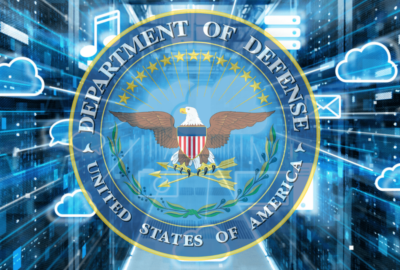Army to meet renewable energy goals through predictability
The Energy Initiatives Task Force held its first industry day to explain how it wants to get green energy projects built on installations. The Army must receive...
wfedstaff | June 4, 2015 1:33 pm
For the Army to meet its renewable energy goal by 2025, it has to become more predictable.
It has to have a process that is standardized, repeatable and shortens the lead time to get these solar, wind, geothermal and other emerging technologies up and running. The projects are among the main way the Army will reduce its dependency on foreign energy and become more resilient.
The goal is for the Army to get 25 percent of its energy from renewable resources in the next 13 years.
Katherine Hammack, the Army’s assistant secretary for Installations, Energy and the Environment, said the key to this entire predictability effort is the new Army Energy Initiatives Task Force (EITF) launched in September, which held its first meeting with industry Thursday. 
The task force is going to take a long and broad look across the department to find opportunities for these programs. EITF includes a wide range of experts in the fields of finance, law, acquisition and installation management as well as other parts of the Army.
Interest from industry
More than 250 vendors and 350 people attended the first industry day Thursday where the task force began to explain its plan to trade land for renewable energy. The service owns millions of acres of land that are not being used and wants vendors to build solar arrays or wind turbines on it in exchange for the energy these produce. The Army plans a second industry day in the spring to further explain its plans.
“We need to increase the resiliency of our installations,” Hammack said. “Many of our installations are at the end of the line, in fairly remote locations. That means that if anything happens upstream, our fall back is diesel generators. We’d like to increase our resiliency by having generation on the installations.”
The task force also will reduce the pressure on the garrison commanders and installations to figure out how to increase their energy resiliency, she added.
Almost every DoD service and agency is analyzing how best to reduce its dependence on foreign energy and improve its resiliency. DoD plans to hand out $30 million in clean energy grants to help test and develop new technologies. 
Richard Kidd, the deputy assistant secretary of the Army for energy and sustainability, said that predictability could cut the time for approval to three to six months, instead of years. Kidd, who came to the Army from the Energy Department in October 2010 where he ran the Federal Energy Management Program, said the service is developing a broad acquisition strategy that could be completed by early 2013.
Moving forward with testbeds
But the Army isn’t standing pat until the strategy is ready.
The service already is working on more than 20 renewable energy projects, many of which will serve as testbeds for this task force-led effort. Two such examples are the solar arrays at Fort Irwin in California and the wind turbines at Fort Tooele in Utah.
John Lushetsky, the executive director of the Energy Initiatives Task Force for the Army, said vendors also should expect a new multiple-award contract in the coming year to build these renewable projects. 
Lushetsky said the Army also will do single procurements using eight different approaches, which include energy savings performance contracts, of which the Army has more than 100 in place now to improve the energy efficiency of existing building, enhance use leasing, cooperative agreements and power purchase agreements.
“We are very, very focused about deployment,” Lushetsky said. “Certainly there is a lot of good research and development still to be done. But a lot of these technologies through DoE support over the last 10-20 years are very much in the marketplace right now and are quickly coming down the cost curve where we have line of sight to where we can see very, very favorable economics with conventional electricity. When you add that market dynamic with the need of the Army to have energy security, you create a tremendous opportunity for both DoD as well as the private sector.”
And that is the end goal for the Army — to make the process as straightforward and quick as possible to create the most favorable environment to bring in private sector investment.
“What is very great about this endeavor is everything’s on the table,” Hammack said. “In our talking with people at OSD, they are bringing us challenges. We are all getting our heads together to figure out what right looks like. As we move forward as the DoD, we want to make sure we are easier to deal with than in the past. By having a predictable process, a very replicatable process with terms and conditions and an acquisition strategy that is well understood, that means developers and the finance industry will recognize that it is a good investment of private sector dollars and public entities.”
RELATED STORIES:
Army to trade land for renewable energy
Pentagon Solutions: Army’s Katherine Hammack
DoD almost ready to hand out $30M in clean energy grants
Copyright © 2024 Federal News Network. All rights reserved. This website is not intended for users located within the European Economic Area.
Jason Miller is executive editor of Federal News Network and directs news coverage on the people, policy and programs of the federal government.
Follow @jmillerWFED






